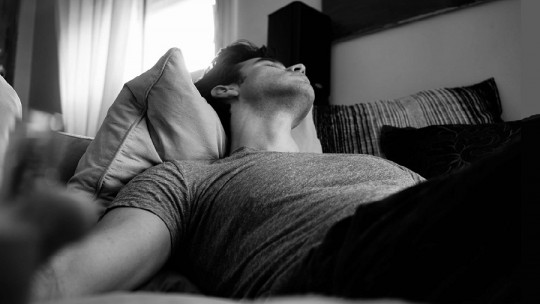People maintain continuous mental activity. We are rational beings who build our reality through thought, which is why it does not cease in its effort to give meaning to what surrounds us.
Every human work, without exception, was a thought before it became tangible. Therefore, we must appreciate its importance in the creative process, as well as its intimate relationship with behavior and emotion.
Impulsive phobia emphasizes this indivisible link between thinking and acting but adopting a pernicious nature that generates great discomfort in those who experience it.
In this article we will review the concept, as well as its characteristics and its consequences on health and quality of life, together with the therapeutic modalities that we have available today to successfully address it.
Phobias: characteristics and symptoms
Phobias are anxiety disorders that are characterized by the appearance of a disproportionate fear response in the presence of very specific stimuli or situations, which activate natural alarm mechanisms in order to respond to what is perceived as a threat To understand them we can resort to the metaphor of allergies, which arise as excessive reactions of the immune system to substances or other elements that are generally innocuous (but which are faced as a dangerous pathogen).
As we will see, impulsive phobia has this main characteristic, although it is true that also shares traits typical of impulse control disorders and OCD.
Returning to phobias in general, it is also important to keep in mind that their onset and maintenance depend on different explanatory mechanisms. They are formed from direct and adverse experience with the object that will later be feared, or by vicarious/social learning (seeing another person being exposed to the stimulus or hearing negative stories about it), but the continuity of the problem is rooted in attempts to avoid it or escape from it. The latter motivate an equivocal feeling of relief, since it ends up extending the problem over time.
In this sense, the affected person articulates cognitive and behavioral strategies aimed at avoiding any coincidence with what scares them, because when they do so they experience a succession of sensations (autonomous hyperactivation) and cognitions that are difficult to bear. The range of situations or other stimuli that can be associated with this irrational fear is almost infinite which is why so many labels are created to define it.
People who suffer from specific phobias rarely go to a psychologist to treat the problem, because if the triggering stimulus is infrequent or can be avoided without major consequences for life, adaptation to the changes it brings about is simple and does not even affect autonomy. nor to well-being. On the other hand, when what is feared cannot be ignored, fear becomes an omnipresent and disabling emotion, which generates symptoms linked to anxiety: cold sweats, irritability, muscle tension, etc.
The latter makes impulsive phobia a really severe problem, because as we will see below, it constitutes an intense fear of a stimulus from which escaping can be really difficult: intrusive thoughts and their possible behavioral consequences (impulses).
What is impulsive phobia?
Impulse phobia is a specific form of fear that is not projected towards an external object, but rather towards the interior Specifically, people who suffer from it feel an intense fear of certain types of thoughts, which is a fact that is very difficult for them to share.
These are mental contents that appear innocuous, but are understood in terms of threat and emerge unexpectedly. But in the case of impulsive phobia, just as important as the way these thoughts make us feel is the way they make us predict the way we will feel and act in the immediate future.
And the fact is that impulsive phobia generates a logic of self-fulfilling prophecy (as often happens with anxiety disorders in general), so that what is feared or that generates anxiety constantly captures our attention
To exemplify the problem, we will divide it into smaller parts and address each of them separately. We will thus distinguish between thought, interpretation and behavior.
1. The thought
All of us have experienced at some point a thought that arose automatically , without the mediation of our will. Very often we can be able to observe it and discard it, because we do not recognize anything in it that could be useful to us, or because we understand it as a harmless word or image that will fade away as soon as we decide to focus our attention on other things around us.
In other cases, it is possible that an idea arises that generates a severe emotional impact on us, since we interpret it in terms of harm or danger. These may be issues related to acts of violence directed at ourselves or other people, sexual behaviors that we judge to be deeply abhorrent, or expressions that violate deep values (blasphemies in people who harbor deep religious beliefs, for example).
It is a mental content that appears suddenly and that may or may not be associated with a situation we are experiencing. Thus, it would be possible that while walking along a cliff the idea of jumping into the void suddenly arose, or that being accompanied by a person (with whom we maintain a close bond) a bloody scene arose in which she was the protagonist. In other cases, however, it can happen without an obvious environmental trigger.
The very fact of being a receptacle for these ideas can alert the person to possible underlying motives, since They are directly opposed to what you would do in your daily life (I would never commit suicide or harm a loved one). It is at this precise moment in which such mental contents reach the level of psychopathological risk, since they precipitate a cognitive dissonance between what we believe we are and what our thoughts seem to suggest we are.
2. The interpretation
The interpretation of intrusive thoughts is an essential factor in precipitating this phobia If the person deprives them of any sense of transcendence, they become diluted and stop generating a pernicious effect on their mental life. On the other hand, if a deeper meaning is attributed to them, it takes on a new dimension that affects self-concept and promotes a feeling of distrust towards oneself and towards one’s own cognitive activity.
One of the characteristic phenomena of this phobia is the connection that is forged between thought and potential behavior. In this way, when he accesses consciousness, the person fears losing control of himself and being overwhelmed by the impulse to carry out the acts that are related to him. Following the previous example, she would feel an irresistible fear of falling from a great height or harming the family member who was accompanying her. Therefore, a fusion between thought and action arises.
This connection can generate Doubts about whether the thought is a product of the imagination or if it is a memory of an event that really happened at a time in the past. All of this causes emotions that are very difficult to tolerate and significant confusion, which also forces doubts about the reason that could be the basis for thinking as one thinks (considering oneself a bad person, losing one’s mind, suffering from hidden impulses or being an offense to oneself). the eyes of a God in whom one believes).
For this reason, impulsive phobia is not only linked to an intense fear of thoughts that could precipitate a loss of control, but also ends up conditioning the self-image and severely deteriorating the way in which the person perceives themselves It is for this reason that talking about what is happening can be extremely painful, delaying the therapeutic approach to the problem.
3. Behavior
As a result of the fear generated by these thoughts and their possible consequences, the person tries to avoid them using all the means at their disposal.
The most common thing is that, first of all, the will tries to impose itself on the speech of the mind (which seems to flow automatically), seeking a deliberate disappearance of the mental contents that generate the emotion. This fact usually precipitates the opposite effect, through which its presence becomes more frequent and intense. As it is a purely subjective phobic object, the person feels the source of their fears as omnipresent and erosive, quickly arising a feeling of loss of control that leads to helplessness.
Other behaviors that may take place are reinsurance. They consist of persistently investigating whether the events about which one has thought have occurred or not, which implies verifications that acquire the severity of a compulsive ritual. Besides, There may also be a tendency to continually ask others about these same facts pursuing the judgment of others to draw one’s own conclusions about it.
Both types of behavior, the avoidance of subjective experience and reassurance about one’s own actions, constitute the basic elements for the aggravation and maintenance of the problem in the long term. Likewise, they can be articulated in a progressively more complex way, in a way that ends up hindering the normal development of daily life (avoiding situations or people that have been associated with the appearance of thoughts, for example).
Treatment
Impulse phobia can be treated successfully. For it There are both pharmacological and psychotherapeutic interventions
In the first case, benzodiazepines are usually used punctually and for a short period of time, while the changes required for an antidepressant to begin to generate its effect occur (approximately two or three weeks). Selective serotonin reuptake inhibitors are often used, which help reduce the presence of negative automatic thoughts.
As for psychological treatments, which are absolutely necessary, specific cognitive and behavioral strategies are usually used, aimed at modifying the way in which thoughts and associated sensations are perceived (live exposure, cognitive restructuring, etc.). .). Among these procedures, controlled exposure and systematic desensitization stand out , in which the patient is made easier to face the situations that produce the phobic reaction without losing control, and allowing time to pass until the anxiety levels decrease. In this way, as one progresses through a series of situations that go from the easiest (in the first psychotherapy sessions) to the most difficult (in the last), the impulsive phobia loses power and finally it stops being a problem.
On the other hand, cognitive restructuring is also used to help weaken the dysfunctional beliefs that keep the impulsive phobia “alive”; This is something that is achieved above all through dialogues based on questions that the patient must ask himself, and in which he sees that his usual way of thinking not only does not fit with reality, but that it causes problems.
Acceptance and Commitment Therapy is also useful , as it accentuates the importance of experiential avoidance, a key phenomenon in impulsive phobia. In this type of therapy, the patient is encouraged to adopt a mentality in which an obsession with avoiding discomfort at all costs does not appear.
This type of intervention in patients, in the case of those people who have impulsive phobia, helps them face the symptoms without giving in, getting used to associating the presence of this discomfort, on the one hand, with the non-occurrence of their fears, on the other. the other.
Finally, it will be necessary to rule out the presence of other mental disorders that could express themselves in a similar way to how this particular type of phobia does, such as Obsessive-Compulsive Disorder, and rule out mood pathologies in which their condition may also occur. onset (especially major depression).









